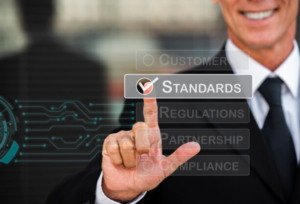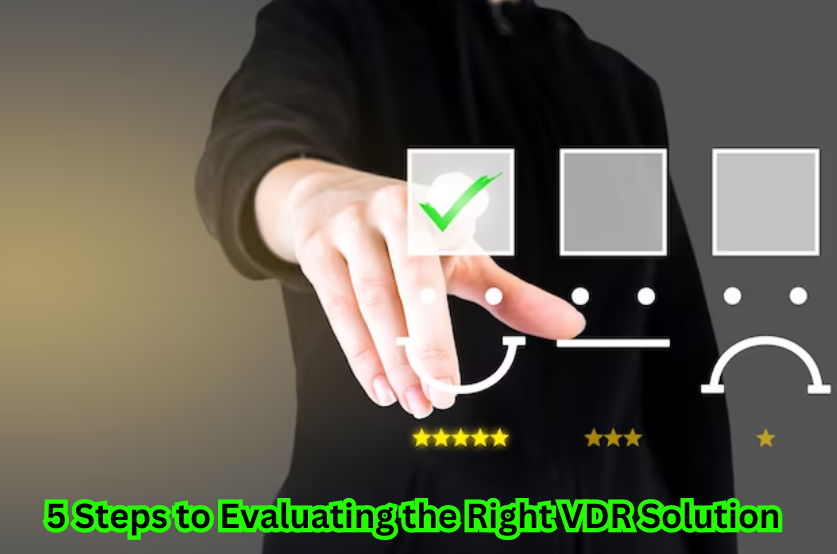Finding the right Virtual Data Room (VDR) option in the fast-paced world of business transactions and data handling is very important. Organizations need a safe, effective, and dependable VDR system more and more as they move toward digital change. To find the best VDR option for your business, you must think strategically about how it fits your wants and goals. We’ll go over five crucial steps in this piece to help you through the process of Evaluating the Right VDR Solution.
Step 1: Write down your needs and goals
Before getting into the sea of VDR options that are out there, it’s important to be clear on what your company needs and wants. What kind of business will the VDR handle? How safe do you think your info needs to be? What rules of compliance do I need to follow? These questions will not only help you pick the right VDR, but they will also keep you from spending money on features and costs that you don’t need. Make sure the factors you use for review are in line with the goals of your business.
Step 2: Do a lot of research
There are many different VDR options on the market, and each has its own features and functions. Do a lot of study to find the one that works best for you. Find reviews, testimonials, and case studies of businesses like yours that have used the VDR system effectively. Think about the provider’s name, how easy it is to use, and how much customer service they give. Remember that making an informed choice is important for a VDR execution to go well.

Step 3: Look at the safety measures
It is very important to keep private data safe, especially when working with virtual data rooms. Take a close look at the VDR solution’s security features. This includes security guidelines, ways for users to prove who they are, and controls on who can see what documents. Make sure that the VDR follows all the rules and regulations in its field, like GDPR, HIPAA, and any other data security laws that apply. Security should be the most important thing to you when you make decisions.
Step 4: Think About Accessibility and User-Friendliness
A VDR system could have all the security features in the world, but if it’s hard to use, it could cause more problems than it solves. Check out the VDR solution’s layout and its ease of use. Think about how easy sharing, posting, and managing papers is. Accessibility is also very important, especially if your team is spread out geographically. Ensure the VDR works with various devices and running systems so everyone can easily work together, no matter where they are.
Now that we’ve discussed the important parts of security and ease of use, let’s look at another important part of choosing the right VDR solution: cost.
Step 5: Look at the cost and ability to grow
Cost is important to consider when making any business choice, and choosing a VDR option is no different. Look at how other VDR companies set their prices and ensure they fit your budget. Watch out for any hidden costs, and see if the price plan can grow with your business. Some service providers may have open plans or choices that you can change according to your needs. Remember that the goal is finding a solution that works with your budget and can grow your business.
In conclusion:
Assessing the appropriate VDR option is a complex process that needs careful thought of many aspects. You can make a choice that fits your organization’s goals if you clearly define your needs, do a lot of research, look at security measures, think about how easy it is for users, and compare costs and growth. Remember that the right VDR solution is more than just a tool; it’s an investment in the safety and speed of your business activities. Take the time to think about your choices, and if you’re not sure which VDR solution will work best for you, talk to professionals in the field.
Transition: If you’re ready to start setting up a Virtual Data Room, you should start by making a list of your needs and goals. This is the first and most important step in the process. Don’t forget that the right VDR option is ready to take your transaction and data management to a new level.
Frequently Asked Questions: Evaluating the Right VDR Solution
Finding the best Virtual Data Room (VDR) option is very important in the fast-paced world of business deals. There are many things to know about “5 Steps to Evaluating the Right VDR Solution.” This FAQ will help you understand them all. Whether you’re a seasoned professional or someone who has never used a VDR before, the answers to these commonly asked questions will help you through a strategy evaluation. Let’s take a trip to clear up some of the most important things you must consider when choosing the best VDR option for your business.
Why would you want to use VDR?
Online safe places and virtual data rooms (VDRs) let people store and share private data during business deals. Many people use them for due research, funding, mergers and acquisitions, and other personal tasks. VDRs make it easier to share papers, keep data safe, and work together with others without any problems.

In virtual data rooms, how do you set who can see what?
Setting rights in VDRs is key to keeping sensitive papers out of the wrong hands. Administrators can usually set role-based rights that say who can see, change, download, or share certain documents. Advanced VDR systems offer fine-grained control, letting admins set different user access levels. This keeps data safe and secure during the whole transaction process.
What are the different parts of VDR?
There are a few main parts that make up virtual data rooms:
- Document Repository: This is the main part of a VDR where files and papers are kept safe.
- User Management: Tools that let managers control what users can do and how they can do it.
- The Q&A Section is a part of the VDR that lets users ask and answer questions. This makes conversation easier.
- Audit trails are detailed logs that keep track of what users do, which improves compliance and openness.
- Features for security: encryption, multi-factor login, and other safety steps to keep data safe.
- Collaboration Tools: Features that make it easy for parties to work together on deals.
What kinds of VDR are there?
There are different kinds of VDRs made to meet the needs of different businesses:
- The general-purpose VDR is good for many business deals and companies.
- Specialized VDRs: Meet the specific safety needs of businesses like healthcare, law, or real estate.
- Enterprise VDRs are scalable options that can help big businesses with complicated data management needs.
- Hosted in the cloud, cloud-based VDRs give you unlimited access from anywhere with an internet link.
Installed and managed on the company’s computers, on-premise VDRs give more control over data.

